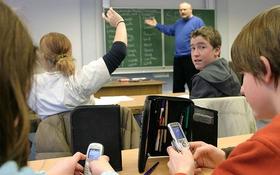Serving 218 students in grades Prekindergarten-12, Wise Academy ranks in the bottom 50% of all schools in Wisconsin for overall test scores (math proficiency is bottom 50%, and reading proficiency is bottom 50%).
The percentage of students achieving proficiency in math is 21-39% (which is lower than the Wisconsin state average of 43%). The percentage of students achieving proficiency in reading/language arts is 21-39% (which is lower than the Wisconsin state average of 41%).
Minority enrollment is 3% of the student body (majority Asian), which is lower than the Wisconsin state average of 33% (majority Hispanic).
Quick Stats (2025)
- School Type: Online School/Charter School
- Grades: Prekindergarten-12
- Enrollment: 218 students
- State Accredited: No
- Live Instruction: No
- Rolling Enrollment: No
- Minority Enrollment: 3%
- Math Proficiency: 21-39%
- Reading Proficiency: 21-39%
- Source: National Center for Education Statistics (NCES), WI Dept. of Education
School Overview
Wise Academy's student population of 218 students has grown by 122% over five school years.
The teacher population of 3 teachers has grown by 200% over five school years.
School Type
Grades Offered
Grades Prekindergarten-12
(offers virtual instruction)
(offers virtual instruction)
Total Students
218 students
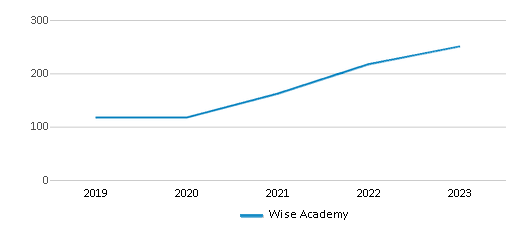
Gender %
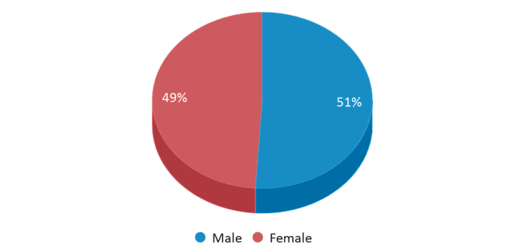
Total Classroom Teachers
3 teachers
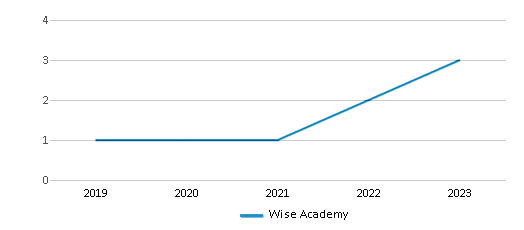
Students by Grade
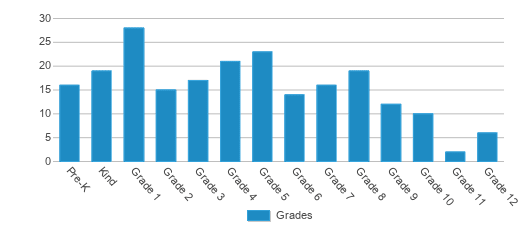
State Accredited Program
No
Personalized Content
No
Live Instruction
No
Rolling Enrollment
No
Flexible Class Schedule
Yes
Accelerated Offerings
No
Classes for Credit/Part Time Options
No
Dedicated College Counselor
No
Tutoring/Mentoring
No
Community Clubs/Activities Offered
No
School Rankings
The diversity score of Wise Academy is 0.06, which is less than the diversity score at state average of 0.53. The school's diversity has stayed relatively flat over five school years.
Math Test Scores (% Proficient)
(18-19)21-39%
43%
Reading/Language Arts Test Scores (% Proficient)
(18-19)21-39%
41%
Student : Teacher Ratio
n/a
13:1
American Indian
n/a
1%
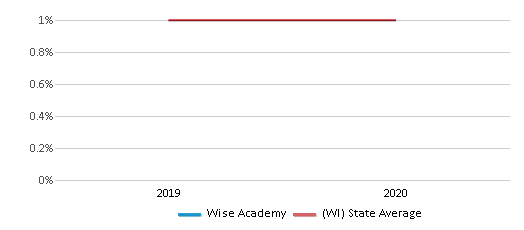
Asian
3%
4%
Hispanic
n/a
14%
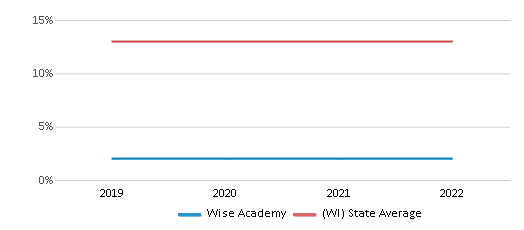
Black
n/a
9%
White
97%
67%
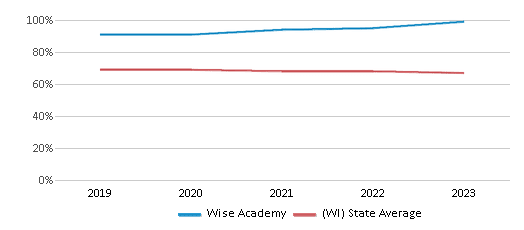
Hawaiian
n/a
n/a
Two or more races
n/a
5%
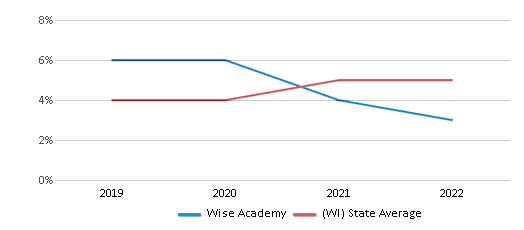
All Ethnic Groups
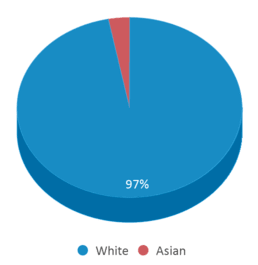
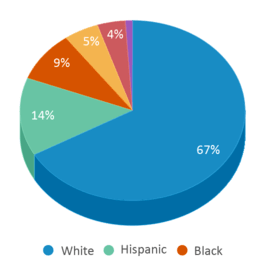
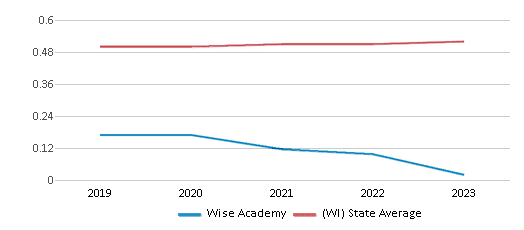
Eligible for Free Lunch
14%
37%
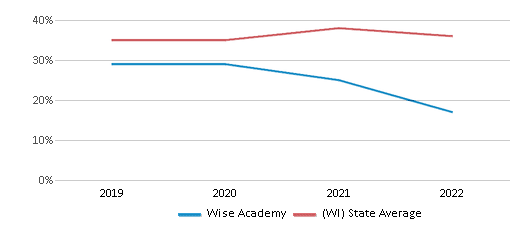
Eligible for Reduced Lunch
4%
4%
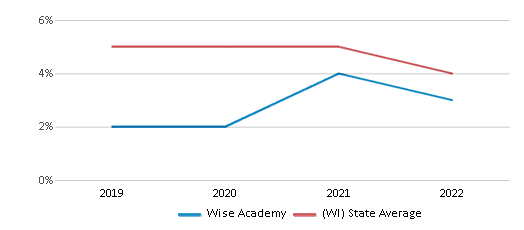
School Statewide Testing
School District Name
Source: National Center for Education Statistics (NCES), WI Dept. of Education
Frequently Asked Questions
What percent of students have achieved state testing proficiency in math and reading?
21-39% of students have achieved math proficiency (compared to the 43% WI state average), while 21-39% of students have achieved reading proficiency (compared to the 41% WI state average).
How many students attend Wise Academy?
218 students attend Wise Academy.
What is the racial composition of the student body?
97% of Wise Academy students are White, and 3% of students are Asian.
What grades does Wise Academy offer ?
Wise Academy offers enrollment in grades Prekindergarten-12 (offers virtual instruction).
What school district is Wise Academy part of?
Wise Academy is part of Nekoosa School District.
School Reviews
Review Wise Academy. Reviews should be a few sentences in length. Please include any comments on:
- Quality of academic programs, teachers, and facilities
- Availability of music, art, sports and other extracurricular activities
Recent Articles

Segregation in K-12 Education: Colonial Era
Explore the origins of educational segregation during the colonial era and the differential treatment of Native American, African American, and white students. This article delves into the historical context, policies, and societal attitudes that shaped early education in colonial America, highlighting the disparities and injustices that persisted within the schooling systems of that time.

Segregation in K-12 Education: The Jim Crow Era
This article delves into the segregated schooling system that existed during the Jim Crow Era, examining the disparities faced by African American students.

December 16, 2024
Personalized Learning: Revolutionizing Education for the 21st CenturyExplore the revolutionary approach of Personalized Learning in K-12 education. This article discusses the benefits, challenges, and potential of tailoring education to individual student needs, incorporating technology and adaptive learning methods to prepare students for the 21st century.



